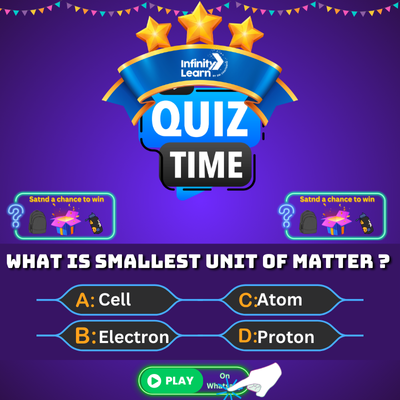Table of Contents
CBSE Class 7 Geography Chapter 6 MCQ Questions
CBSE Class 7 Geography Chapter 6, titled Human Environment Interactions: The Tropical and the Subtropical Region, explores the relationship between human activities and the environment in tropical and subtropical regions. This chapter from the NCERT textbook, following the CBSE syllabus, covers climate, vegetation, wildlife, and human settlements, highlighting human adaptation and environmental modifications. MCQ Questions for Class 7 Geography chapter 6 are essential for reinforcing knowledge and ensuring students’ understanding of key concepts.
Practicing class 7 geography chapter 6 mcq questions, especially those with answers, provides immediate feedback, helping students identify and correct mistakes. This method is crucial for effective learning and retention, preparing students for exams by enhancing their critical thinking and decision-making skills. Sample questions, such as those testing knowledge on vegetation, human settlements, and wildlife, illustrate the type of content students need to master.
Overall, class 7 geography chapter 6 MCQ questions play a vital role in helping students consolidate their knowledge and perform better academically in understanding human-environment interactions in tropical and subtropical regions.
MCQ for Class 7 Geography Chapter 6 MCQ Questions with Answers
Question 1: What is the primary occupation of the people living in the Ganga-Brahmaputra plains?
a) Fishing
b) Agriculture
c) Mining
d) Textile production
Answer:
b) Agriculture
Question 2:Which river forms the largest river basin in the world?
a) Nile River
b) Mississippi River
c) Amazon River
d) Yangtze River
Answer:
c) Amazon River
Question 3:Which crop is primarily grown in the Ganga-Brahmaputra plains?
a) Wheat
b) Maize
c) Paddy
d) Cotton
Answer:
c) Paddy
Question 4:What type of climate characterizes the Amazon Basin?
a) Dry and hot
b) Cold and wet
c) Hot and wet
d) Temperate
Answer:
c) Hot and wet
Question 5:What is the staple food of the people living in the Amazon Basin?
a) Wheat
b) Rice
c) Manioc
d) Corn
Answer:
c) Manioc
Question 6:Which type of trees are commonly found in the Brahmaputra plain?
a) Pine trees
b) Bamboo groves
c) Coconut trees
d) Olive trees
Answer:
b) Bamboo groves
Question 7: What is the name of the local fish found in the Ganga and Brahmaputra rivers?
a) Salmon
b) Tuna
c) Rohu, Catla, and Hilsa
d) Cod
Answer:
c) Rohu, Catla, and Hilsa
Question 8: Which animal is commonly found in the delta area of the Ganga-Brahmaputra basin?
a) Leopard
b) Bengal tiger
c) Kangaroo
d) Polar bear
Answer:
b) Bengal tiger
Question 9: What type of farming is practiced on steep slopes in the Ganga-Brahmaputra basin?
a) Slash and burn
b) Shifting cultivation
c) Terrace farming
d) Plantation farming
Answer:
c) Terrace farming
Question 10: Which plant is known for storing water in its leaves and is found in the Amazon rainforest?
a) Cactus
b) Bamboo
c) Bromeliads
d) Oak
Answer:
c) Bromeliads
Question 11: What kind of housing structure is common among the people living in the Amazon rainforest?
a) Igloo
b) Maloca
c) Cottage
d) Bungalow
Answer:
b) Maloca
Question 12: Which river flows through the equatorial region and reaches the Atlantic Ocean?
a) Nile River
b) Yangtze River
c) Mississippi River
d) Amazon River
Answer:
d) Amazon River
Question 13: What type of vegetation is predominant in the Ganga and Brahmaputra plain?
a) Coniferous trees
b) Tropical deciduous trees
c) Mangrove trees
d) Evergreen trees
Answer:
b) Tropical deciduous trees
Question 14: Which animal species in the Amazon Basin is known for its brightly colored plumage and oversized bills?
a) Parrot
b) Eagle
c) Toucan
d) Sparrow
Answer:
c) Toucan
Question 15: What is the significant feature of the rainforest that prevents sunlight from reaching the ground?
a) Sparse trees
b) Dense “roof” created by leaves and branches
c) Thick undergrowth
d) Open canopy
Answer:
b) Dense “roof” created by leaves and branches
Question 16: What are the primary crops grown by the people of the Amazon Basin?
a) Wheat, corn, and rice
b) Tapioca, pineapple, and sweet potato
c) Cotton, jute, and sugarcane
d) Coffee, tea, and rubber
Answer:
b) Tapioca, pineapple, and sweet potato
Question 17: Which Indian state is known for its tea plantations in the Ganga-Brahmaputra basin?
a) Gujarat
b) Punjab
c) Assam
d) Rajasthan
Answer:
c) Assam
Question 18: What type of wildlife is commonly found in the Brahmaputra plain?
a) Elephant
b) Tiger
c) One-horned rhinoceros
d) Giraffe
Answer:
c) One-horned rhinoceros
Question 19: Which practice involves clearing land by slashing and burning trees?
a) Terrace farming
b) Shifting cultivation
c) Slash and burn agriculture
d) Crop rotation
Answer:
c) Slash and burn agriculture
Question 20: Which fish in the Amazon Basin is known for being flesh-eating?
a) Trout
b) Salmon
c) Piranha
d) Catfish
Answer:
c) Piranha
Question 21: Which crop is known as a cash crop in the Amazon Basin?
a) Rice
b) Wheat
c) Coffee, maize, and cocoa
d) Cotton
Answer:
c) Coffee, maize, and cocoa
Question 22: Which reptile species are found in the Amazon rainforest?
a) Iguana and Komodo dragon
b) Alligator and crocodile
c) Anaconda and boa constrictor
d) Python and cobra
Answer:
c) Anaconda and boa constrictor
Question 23: What type of climate does the Ganga-Brahmaputra basin experience?
a) Temperate climate
b) Dry and arid climate
c) Monsoon climate
d) Polar climate
Answer:
c) Monsoon climate
Question 24: Which city is an important port on the River Hooghly?
a) Chennai
b) Mumbai
c) Kolkata
d) Surat
Answer:
c) Kolkata
Question 25: Which insect is considered a significant part of the diet in the Amazon Basin?
a) Termites
b) Beetles
c) Queen ants and egg sacs
d) Grasshoppers
Answer:
c) Queen ants and egg sacs
Question 26: What is the term used for the mouth of a river?
a) Delta
b) Source
c) Mouth
d) Basin
Answer:
c) Mouth
Question 27: Which large animals are commonly found in the Amazon rainforest?
a) Elephants and lions
b) Monkeys, sloth, and ant-eating tapirs
c) Kangaroos and koalas
d) Zebras and giraffes
Answer:
b) Monkeys, sloth, and ant-eating tapirs
Question 28: Which human activity is leading to the destruction of the Amazon rainforest?
a) Hunting
b) Developmental activities
c) Fishing
d) Tourism
Answer:
b) Developmental activities
Question 29: What is the population density of West Bengal as mentioned in the text?
a) 500 persons per sq. km.
b) 1029 persons per sq. km.
c) 1500 persons per sq. km.
d) 750 persons per sq. km.
Answer:
b) 1029 persons per sq. km.
Question 30: Which mission was launched by the Prime Minister of India to achieve universal sanitation coverage?
a) Make in India
b) Digital India
c) Swachh Bharat Mission
d) Skill India
Answer:
c) Swachh Bharat Mission







